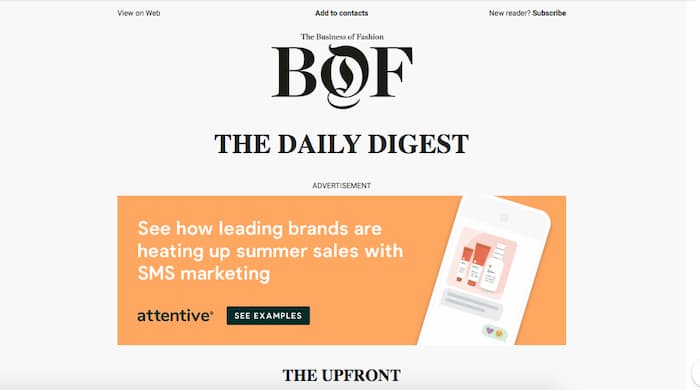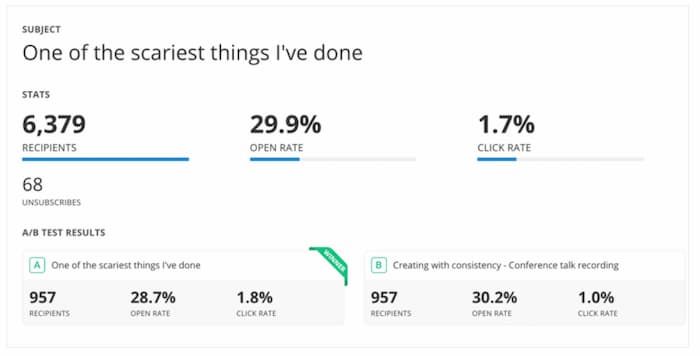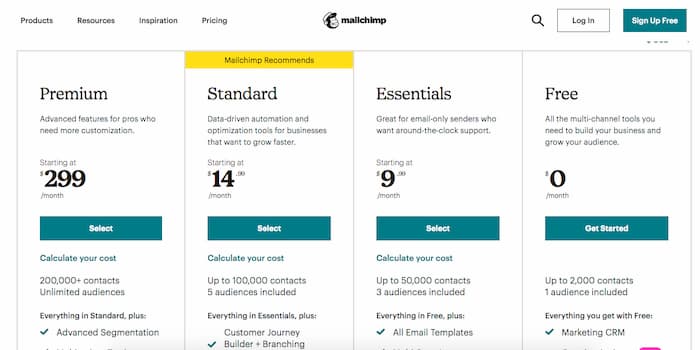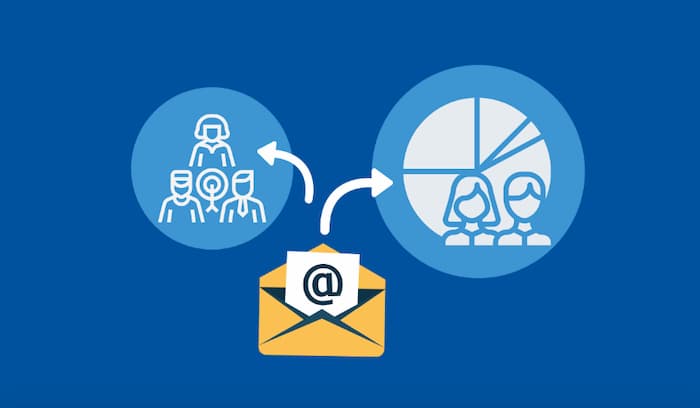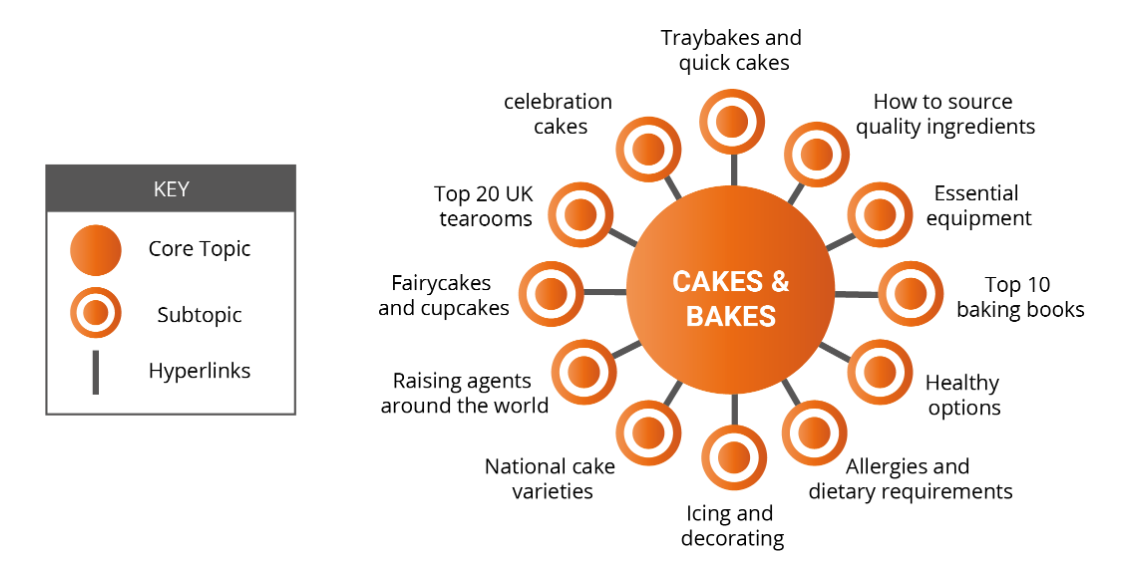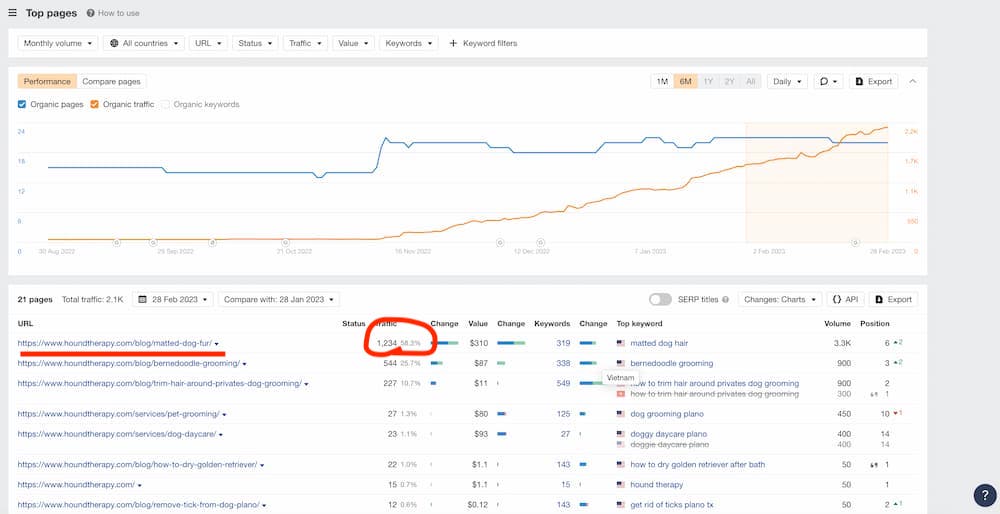The Evolution of AI Email Marketing Campaigns
Email marketing is one of the oldest digital marketing strategies that has proven to stand the test of time. No matter what your industry is, start building an email list as soon as possible to assist in the growth of your business. Here you’ll learn the importance of email marketing campaigns and how they become revenue-producing assets to your business.
What is an email marketing campaign?
An email marketing campaign is a series of emails designed to educate, inform, entertain and delight any audience. The ultimate goal is to drive traffic back to your website as well as increase the number of sales your business makes regularly.
What’s an email list?
An email list is a collection of email addresses obtained through opt-in forms on your website, social media, or any digital publication you’ve posted online. Subscribers must enter their information and confirm that they agree to have you send emails sent to their inbox.
What content do you send in an email marketing campaign?
The type of content strategy you use will depend on the industry and niche your business is in. Typically, email campaigns consist of monthly newsletters, discounts, sales promotions, educational content and company updates.
There are laws in place that protect people’s privacy as well as the type of content you can send. For example, you must offer an unsubscribe option in every email you send and honour that request should someone opt out of your list. There are penalties and fines for those who don’t abide by the laws that govern commercial email.
Read more about the CAN-SPAM Act and the compliance guide that deals with issues and requirements that must be met within your email campaigns.
What is AI Email Marketing?
AI email marketing, also known as artificial intelligence-powered email marketing, involves utilizing AI technologies and algorithms to optimize and enhance various aspects of email marketing campaigns. It combines the power of artificial intelligence and machine learning to automate, personalize, analyze, and improve the efficiency and effectiveness of email marketing strategies.
Here are some ways AI is utilized in email marketing:
- Personalization: AI algorithms analyze data about individual recipients to create personalized email content, subject lines, and offers. This can lead to higher engagement and conversion rates.
- Segmentation and Targeting: AI helps in segmenting email lists based on various criteria, such as demographics, past behaviour, preferences, and engagement patterns. Tailored content and offers are then sent to each segment, improving relevancy.
- Automated Campaigns: AI can automate email campaigns by determining the optimal time to send emails, frequency, and even the type of content to be sent to each recipient. This saves time and ensures timely and relevant communication.
- Predictive Analysis: AI can predict future behaviour and preferences of recipients based on past interactions. This information is valuable for crafting targeted campaigns and offers.
- A/B Testing Optimization: AI can automate and optimize A/B testing by analyzing different elements like subject lines, images, layouts, etc., and identifying which variations perform the best.
- Content Generation and Optimization: AI can assist in generating email copy, suggesting subject lines, and even creating personalized product recommendations based on customer behaviour and preferences.
- Optimizing Send Times: AI algorithms can analyze recipient behaviour and engagement patterns to determine the best times to send emails for maximum impact.
- Customer Journey Mapping: AI can help map out and optimize the customer journey, ensuring that emails are sent at appropriate stages to nurture leads and encourage conversions.
- Feedback Analysis: AI can analyze responses and feedback from recipients, extracting valuable insights to enhance future campaigns and strategies.
AI-powered email marketing aims to improve engagement, increase conversions, reduce manual effort, and ultimately enhance the overall effectiveness of email campaigns through data-driven decisions and automation.
Click here to read more about artificial intelligence sending email.
Benefits of email marketing
- Increase traffic
- Increase revenue
- Establish authority
- Build relationships
- Learn about your audience
- Biggest ROI in digital marketing
Increase traffic
As a traffic generation tactic, email marketing works beautifully with a large list of interactive subscribers. At the click of a button, you can inform your entire list about new content, discounts, promotions or sales that you’re offering on your website.
With thousands of subscribers on your list, your website is literally Google-proof since you can generate traffic without ranking for a keyword.
Of course, in order to build a list in the thousands, you need to have visibility in the search results, and social media or have access to a source of traffic for users to opt-in.
Increase sales
Email lists are excellent tools to use to increase the sales your business generates. With a subscriber opting in to receive emails, it gives you more opportunities to get your content, products and services in front of their eyes.
Generally, it takes between 6-8 touchpoints to generate a qualified lead. Email marketing gives you the ability to reach your prospects more times than you could without having an email list. The additional touchpoints keep your company fresh in the minds of your subscribers.
Not only do email marketing campaigns contribute to generating new clients, but they also provide a way to generate repeat sales from existing clients who have already purchased from your company.
Establish authority
An email list offers you the opportunity to demonstrate the expertise of your company to your audience. Whether it’s through a monthly newsletter or an in-depth blog post you want to promote, you have the ability to get this content in front of your subscribers.
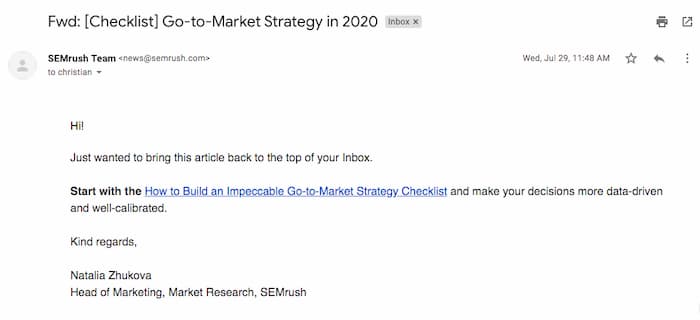
When you’re consistently publishing top-notch content, you establish your company as an authority in your industry. The most popular form of content to establish authority is real-life case studies of how your company has helped a client.
When readers can relate to a real-life situation and see how they could also benefit from your services it becomes a powerful marketing tool. With a list of avid readers, there are plenty of opportunities to show how effective your products and services can be for your clients.
Build relationships
Active subscribers to your email list give you the opportunity to build relationships. When your subscriber sees and reads content from your company regularly, you become familiar with them.
Apart from just sending content that educates or is offering some sort of sales, you can also invite them to take part in events and giveaways. The ability to contact your list allows you to give back to your subscribers as a way to express your gratitude for their loyalty.
The give and take between you and your list builds relationships, brand loyalty and advocacy. When your clients feel like you’re looking out for them, you’ll have their support and loyalty for a lifetime.
Learn about your audience
Just about every email marketing tool gives you a summary of statistics on the success of your campaigns. Track valuable metrics such as the open rate and click-through rate to learn more about what topics and content your subscribers are most interested in.
The open rate of your email campaign can indicate the quality of your email subject line. An email that gets a super high open rate means your audience is highly interested in the topic you’re emailing about. This can be an indication for potential titles of articles that would also attract a high click-through rate on your website.
Within the dashboard of your email marketing tool, you will also find the click-through rate of the email that was opened. Again, if a high number of users opened the email and clicked through to your website, you’re obviously providing content that is highly targeted to their interests.
If people deleted your email without clicking through to your website, you might want to consider changing up your email for something more engaging.
Surveys
The best way to learn what your audience likes is to just ask what they want to see more of to find out firsthand what their interests are. Creating surveys is an effective way of generating statistics and finding out the preferences of your audience. You can create more content based on your findings, and present the results using visual content-which typically generates more backlinks and earned media.
Biggest ROI in digital marketing
On average, email marketing produces the largest ROI in the digital marketing industry. The cost to start and maintain an email marketing campaign is so low that it’s not uncommon to see a 3800% return on your investment. For every $1 you invest you get $38 back.
The email marketing software is inexpensive. You can get free plans to start out or purchase plans that run as much as a few hundred bucks a month once you have a large list of subscribers.
The biggest cost involved in an email marketing campaign is creating content. You’ll need to content to attract users to sign up for your list. Whether that’s through posting to social media, publishing blog posts, or offering gated content in return for contact info. Then you’ll need content to send out to your list once they’re subscribed.
Tips for creating an email marketing campaign
- Post an opt-in form everywhere you can
- Segment your list
- Automate your campaigns
- Don’t spam your list
- Never stop learning about your audience
Post an opt-in form everywhere you can
This is pretty self-explanatory, however, you want to have as many ways for people to become subscribers as possible. That means having an opt-in box in the sidebars of your website, in the footer, in your social media posts and using a popover on your pages.
Segment your list
Make sure you’re segmenting your list into the most appropriate categories for your subscriber. You need to ask them right from the start what type of content they are most interested in receiving.
Regardless of whether you are super-niche-oriented and only talk about one product or topic, you can still find out whether your subscribers want to get a specific type of email.
Give them the choice to receive offers, discounts, promotions, case studies, company updates or other content that you may be producing.
Personalize your email as much as possible in order to keep the interest of your subscribers. You don’t want your email getting the delete button because your subscriber gets tired of the content you send. Make sure you’re addressing the needs of your list by asking them right from the start about the content they would be most interested in.
Automate your campaigns
Use automation as much as possible to create a content schedule for new subscribers and existing clients. For new subscribers, establish a sequence of emails that introduces them to your product and company or the topic that they’re interested in reading about.
You can set your email marketing campaigns to send out an email on a set schedule whenever someone opts in to your list.
Don’t spam your list
The fastest way to lose a subscriber is to constantly bombard them with emails asking for sales and purchases. Avoid sending too many “hard sell” emails and mix up your schedule with content that helps to build trust.
Going for the kill too early and too often comes off as spam mail. You will quickly be dismissed as spam if you’re not offering value to your list members.
Never stop learning about your audience
Always be on the lookout for changes you can make to your campaigns. Whether it’s following up with your list, asking them for feedback or monitoring the engagement metrics your emails generate, make sure you’re making adjustments.
When you can continually add value and make the necessary changes to accommodate your audience better, you continually add value to your campaign. This approach leads to loyal subscribers and brand advocacy.
Build your email list ASAP
An email list can take a while to build up enough subscribers to the point where you can see the results in your revenue. It’s not always a straight shot to build a big audience and be successful with your content. There’s a learning curve to how you maximize your results.
Start building your list at the earliest point of the development of your website to provide the additional traffic, revenue and new clients your website generates regularly.
React SEO: Best Practices To Make It SEO-friendly
Search Engine Optimization (SEO) has become essential to any online presence. It not only impacts the success of a product or service in the marketplace but also affects the revenue and efficiency of any business owner, directly or indirectly. React websites face unique challenges when it comes to SEO due to the complex nature of the framework.
With mobile users accounting for nearly 59% of all global website traffic, businesses recognize the importance of having effective digital marketing strategies that can expand their reach and draw in a larger audience than originally anticipated. Single Page Applications (SPAs) offer a viable solution to this problem, allowing companies to boost their reach and gain access to untapped markets.
Understanding Google Bot WebPage Crawling

To optimize the SEO of a React web app, it is essential to comprehend how Google bots work and the common difficulties React solutions encounter. Google utilizes bots to rank websites, scanning your website’s pages and discovering new ones. You can avoid having too many bot requests by specifying the pages you want to be crawled in the robots.txt file.
React applications are single-page applications, making it hard for the bots to crawl the pages. Technologies like React Helmet and server-side rendering can be used to ensure that the bots can access and index the pages effectively. It is also important to structure the React web app to enable bots to access the content easily. It can be done by organizing the content logically and using the appropriate HTML tags.
Google Bot crawls webpages by following the links on a page and then downloading the page it finds. It is done by using a process known as web crawling. The bot then reads the content of the page and stores it in an index, which is then used by the search engine to provide relevant results when a search query is made. It is important to note that the bot only reads the HTML code, not the JavaScript code, which can make it difficult for React websites to be indexed correctly.
Why is SEO Compatibility Important?
Search engine positions are incredibly vital nowadays. Studies show that 95% of all web users go to websites displayed on the initial page of Google’s results. If you want your app to be noticed by those who will utilize it, you must enhance it to be search engine friendly.
A recent study revealed that the top 5 search engine results page (SERP) listings account for over 65% of all web traffic. It demonstrates the significance of achieving a high ranking on Google.
Major SEO Challenges for React SPA Pages
When the crawler first visits a React single-page application, it is greeted with a blank page. The application elements appear on the screen as the HTML and JavaScript codes are slowly loaded.
In addition, various other issues must be addressed for a React single-page application to succeed. Let us discuss some issues:
1. Site mapping
A sitemap is a document outlining the structure of a website, including its videos, pages, and other branches. It helps Google easily crawl through the site and understand its contents. Unfortunately, React does not have a built-in method for generating a sitemap. If you use React Router to manage a route, you must find an external tool to generate a sitemap, which may require some effort.
2. Blank First Pass Subject
React apps are known to rely heavily on JavaScript, which can make them difficult for search engines to crawl and index. It is because React uses an “app shell” model, where the HTML page does not contain meaningful content, and instead, JavaScript must be executed to display the page’s content.
It means that when Googlebot visits the page, it sees an empty page, and only after the page is rendered does it get the content. It can create a significant delay in indexing thousands of pages.
3. Metadata of the Webpage
Meta tags are helpful for social media sites and Google to show correct thumbnails, titles, and descriptions for a certain page. However, these websites rely on the tag of the web page to acquire this data.
When a website or app does not use JavaScript for the landing page, React renders all the content, including the Meta tags. It makes it difficult for individual pages to modify their metadata as the app shell stays the same for the entire website or app.
4. Loading Period and User Interface
Completing JavaScript tasks can be incredibly time-consuming, from fetching to executing to parsing. It is even more challenging when network calls must be made to gather the desired information, resulting in extended loading times for users.
When assessing page rankings, Google considers this as long loading times can adversely affect the user experience and result in a lower ranking.
Methods to Make React SEO-friendly

React websites can be optimized for SEO during development, ensuring they are search engine friendly. Incorporating React for SEO best practices into the design and coding of websites will help to boost their rankings and draw in more organic traffic. Let us discuss some of the tricks to developing React apps with an SEO-friendly approach.
1. Prerendering Technique
Prerendering is a good way to ensure that a React single-page application complies with search engine protocols. It involves pre-generating and storing the HTML and CSS scripts and storing them in the cache memory.
An algorithm then checks if the website request is from a user or a Googlebot. The browser will load the HTML file as usual if it is a user. If it is a bot, the HTML script stored in the cache memory is rendered instead, significantly reducing the loading time and eliminating the possibility of a blank page appearing.
Pros:
- Simple implementation
- Compatible with trending websites innovations
- Requires less codebase variation
- Executes every JavaScript file by translating it into static HTML.
Cons:
- No free services
- It takes longer time for large data files
- You need to generate a new version of the page each time you change its content.
2. Isomorphic React Practices
Isomorphic JavaScript Technology can automatically recognize if JavaScript is enabled or disabled on the server side. If disabled, Isomorphic JavaScript can take over on the server side and deliver the resulting high-quality content to the client-side server.
Once the page is loaded, all the necessary content and features are instantly available. With JavaScript enabled, the website behaves like a dynamic application, with multiple components that load quickly. It results in a smoother user experience compared to a regular website, providing a more enjoyable single-page application experience.
3. Server-side Rendering
To develop a React Web application, you must know the distinctions between client-side and server-side rendering. Client-side rendering involves the browser receiving empty HTML files with limited or no content. In contrast, server-side rendering is a process where the server responds to a request with a completely rendered HTML page. Having a grasp of these two concepts is essential for creating a React Web application.
JavaScript code downloads the content from the servers and makes it available on the user’s screen. However, client-side rendering can create difficulties for search engine optimization (SEO) as Google’s web crawlers can either not see the content or see less content that has not been indexed correctly.
In contrast, server-side rendering provides browsers and Google Bots with HTML files that come with the complete content. This makes it easier for Google Bots to index and achieve higher rankings.
Pros:
- It offers optimization for social media pages
- Top-notch SEO compatibility
- Provides immediate page availability
- Improves UI features and functioning
Cons:
- Slower webpage transition
- Complicated catching functions
- Costly than other methods
Tricks to Maintain the SEO Compatibility of React Webpages

When crafting a SPA, developers can utilize one of the popular JavaScript frameworks such as React, Angular, or Vue. According to a recent survey, React is the most popular. Here are some of the tricks to develop SEO-friendly React websites. Let us start with the following:
- Utilizing the URL Cases
Google bots can be tripped up by pages with different URLs depending on the case of the letters, such as /envision and /or Invision. To avoid this issue, it’s best practice to use lowercase when creating URLs.
- Less Use of <a href>
A common mistake in developing SPAs is to use a <div> or a <button> to modify the URL. Although this is not a fault of React itself, it can pose a problem to search engines like Google. Google bots process URLs and look for additional URLs to crawl through <a href> elements. If the <a href> element is missing, Google bots won’t crawl the URLs and pass on PageRank. To ensure Google bots can identify and crawl the URLs, it is important to include <a href> elements for the bots to detect.
- Constantly Solving the 404 Code
If you encounter an error on any page, it will likely display a 404 code. To fix this, it is best to update the files in server.js and route.js as soon as possible. Doing this can drive more traffic to your website or web app.
Final Words
Single-page React applications provide excellent performance, smooth interactions similar to native applications, a lighter server load, and easy web development. SEO issues should not prevent you from leveraging the React library, as strategies are in place to combat this problem. Additionally, search engine crawlers are becoming more sophisticated yearly, so SEO optimization may eventually become a non-issue when using React.
5 Reasons Keyword Research Is Important to Every SEO Campaign
You may have read it a million times, or you may just be reading it now but keyword research is important. In fact, it’s considered one of the most crucial stages of a successful SEO campaign. Search engine optimization is based on optimizing pages for keyword searches. If there are any misinterpretations about what a user is looking for when they type in a search, it can completely throw off your entire campaign.
In order to understand what your SEO company does for you, it helps to understand why the research stage of an SEO campaign is vital to generating a return on your investment. Here are 5 reasons SEO companies put so much effort into keyword research.

Understanding search intent
Search engines are evolving at a rate much faster than ever before. The use of artificial intelligence and machine learning has allowed search engines to pinpoint search intent with extremely accurate precision. This advancement in search engine technology has also led to the ability to determine whether any given web page can answer the intent of a search.
According to Market.us, the Artificial Intelligence Market was valued at USD 129.28 billion in 2022. It is projected to grow at a compound annual growth rate (CAGR) of 36.8% from 2023 to 2032, reaching a value of USD 2745 billion.
Think about it. Google now has statistics on billions of searches where they assess what a user has searched, what they have clicked on and how much time that user has spent on the pages they clicked on. This information is extremely valuable for formulating the most accurate idea of what “the best answer” is to a search query.
To understand search intent is to understand what a user is truly looking for when they type in a specific keyword search. If you know what they want and need to see to completely satisfy that search, you can provide content that addresses their needs at all levels.
Keyword research is the process of identifying the topics, the keywords and the level of credibility required to be the best answer to a search result.
Benchmark the strength of your competition
A large part of determining the true intent of a search query is analyzing the pages that are already ranking for that search term. You can extract similarities from the top-ranking pages and pinpoint characteristics that are contributing to being displayed in the top-ranking positions.
For example, if the keyword you’re trying to rank for results in 10 web pages that are massive white paper essays, it’s safe to say that you’ll need extremely long-form content to rank on the first page.
If the first page of search results were all in the form of list-styled content, it would make sense to write a page that’s in the same format.
The competitive analysis goes beyond just analyzing the type of content but also means comparing the backlink profiles. In order to determine the strength of the competition, you need to consider the domain authority and the backlinks pointing to each page.
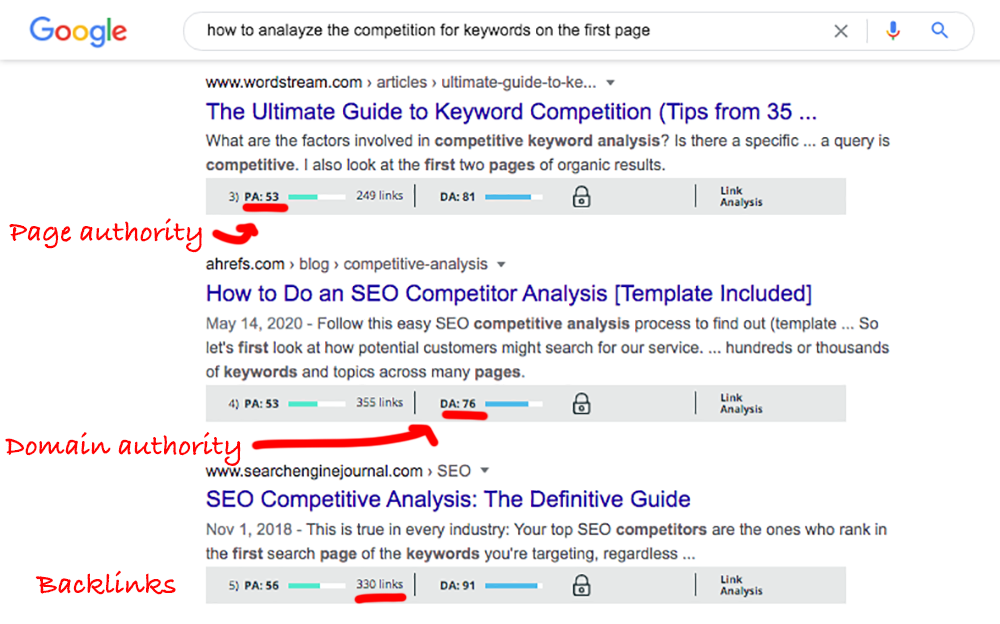
Keep in mind that domain authority and the number of backlinks have become arbitrary in terms of achieving rank. We are seeing more and more websites being given the chance to appear on the first page of results IF the content is outstanding and optimized to answer the true intent of a search.
If users respond and engage in the content on a lower domain authority website, that website may hold it’s ranking long enough to acquire the backlinks needed to maintain its position. If the content is not engaging, the website is shipped off the first page of results to allow other websites a chance at being “the best answer to search intent.” This process can be attributed to one of the many functions of Rankbrain, Google’s artificial intelligence that plays a large role in first-page rankings.
Nevertheless, the backlinks and domain authority of the top-ranking pages are still major considerations on how to prioritize the keywords in your strategy. There are some keywords that will take longer than others to achieve a first-page appearance. The backlink profile and domain authority of your competition give you insight into how strong your competition actually is for that specific keyword.
Develop keyword options
Google reports that there are close to 17% of total searches have never been seen before. This means that the way people are typing in their searches is constantly changing and are, for the most part, long-tail keywords.
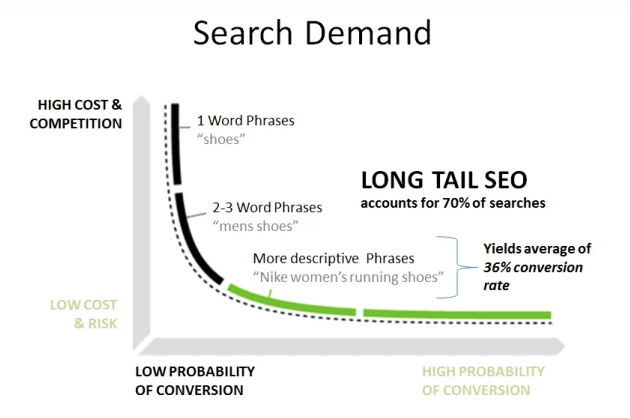
Long tail keywords are typically considered three or four keywords strung together in a search. Since the advent of voice search, long-tail keywords are becoming longer with searches becoming more conversational in nature.
In order to come up with the best keyword strategy, you need options.
Although Google ranks according to keyword topic, optimizing for specific target keywords will help your website rank in a top position. Keyword research includes finding the most commonly searched terms as well as a list of the options that serve the same intent. Balancing the strength of competition, the volume of traffic and your current website status is part of the process of establishing a keyword strategy.
Establish a keyword strategy
The goal of search engine optimization is to create content that ranks and sends visitors to your site at each stage of the buyer journey. As a lead-generating asset, your website should target keywords that drive traffic at the awareness stage, the consideration stage as well as the decision stage.

Keyword research leads to the discovery of keywords your site currently ranks for which present traffic opportunities. Keywords in “striking distance” are considered to be those in positions 11-20 (which is on the second page of search results). There is much less work to be done on these pages than starting from scratch, so they become short-term goals in your keyword strategy.
Moving a page ranking from the second to the first page can be done by enhancing the content, enhancing the optimization, and building internal and/or external links. Discovering traffic opportunities such as this is typically found during keyword research.
Keywords that require new content or developing a topic cluster fall under the long-term strategy. Since content needs to be published, optimized and have links built to it, it’s a long process to move it to the first page of results.
Ideally, your SEO campaign will include both short-term and long terms goals for driving traffic.
Develop content that drives traffic
The content strategy you implement will closely follow your keyword strategy. You can enhance the content your site publishes by focusing on what users want to know and what they need to know.
A large part of optimizing for ideal keywords is answering commonly asked questions. The process involves breaking down major keyword topics into more focused subtopics that form topic clusters.
A topic cluster consists of pillared content and clustered content. Pillared content covers a broad range of your major keywords. These pages create the “pillars” of your website and are most often service pages, product categories or major themes that can be broken down into many different subtopics.
Clustered content is the articles and posts that solve problems, provide education and are narrowly focused on answering a very specific aspect of search intent. Here is an example of a topic cluster on cakes:
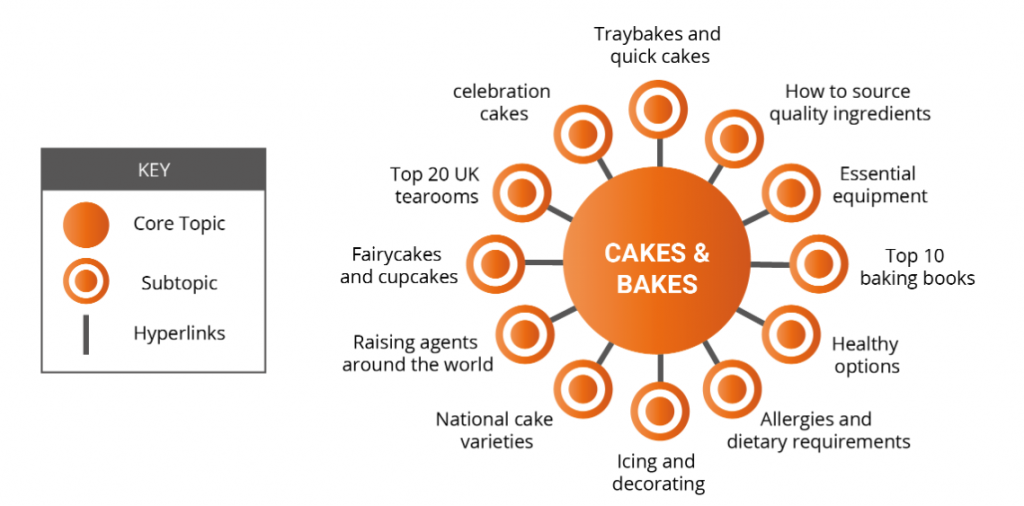
By implementing this type of content structure, your site develops depth and demonstrates expertise in your niche and industry. Keep in mind that Google loves websites that can satisfy search intent. If your site has content that consists of dozens of articles that answer commonly asked questions in detailed articles, you become a strong candidate for keyword-related searches.
As you build valuable content assets within a keyword topic, your site builds credibility and authority and most importantly the ability to satisfy search intent.
Don’t underestimate keyword research
It should be much clearer why keyword research is considered a major foundational practice in developing an SEO campaign. It helps to understand your audience as well as understand search engines in order to create content that performs well in the search results.
Don’t underestimate the power of keyword research. When done correctly, it results in the discovery of the best solutions for driving the most traffic with the least amount of effort.
How To Generate More Leads From Your Website
If your focus is on the future growth of your business, you probably want to know how to generate more leads in the shortest period of time. Why not take advantage of one of your most powerful marketing tools-your website?
Most business owners aren’t aware of the options that exist for increasing the number of leads your website generates. This article is going to reveal a few of the key tactics you can set into motion in order to capitalize on greater streams of revenue.
Rank higher for keywords that convert
It sounds simple right? If it were that simple, we would all be neighbours on luxury yachts in Monaco at some point. The truth is that the closer your page is to the number one position, the more clicks it regularly receives.
Find the pages that are already driving traffic. You can use a tool like Ahrefs to pull up your best-performing pages and see which terms are driving the most traffic.
Alternatively, you can also consult one of the most powerful online tools you can get for free. Google Analytics to see the traffic that every page on your site is receiving. Click on Behaviour, Site Content, and All Pages.
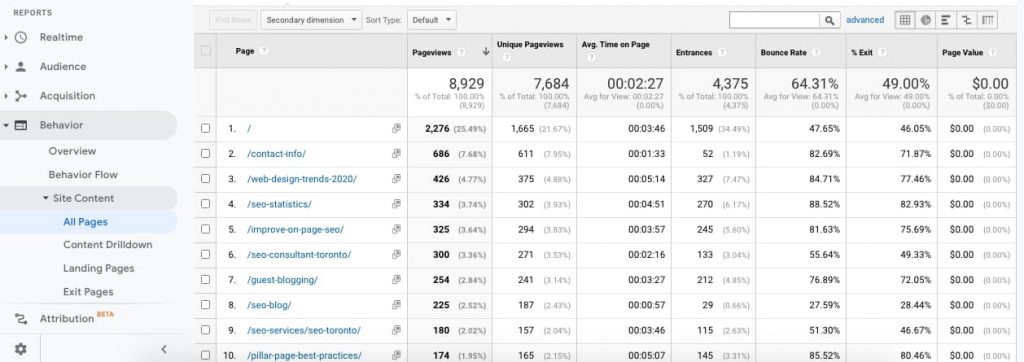
Now you have a report on what pages are already performing for your website. The reason this is important is that some of the biggest gains you can make in your traffic generation are moving your website up for a keyword that already ranks on the first page of search results.
That means that the amount of traffic that you receive from moving your page anywhere from #5-10 into the top 5 spots will result in a huge jump in traffic. Here is a study performed on the traffic/click-through rate of the top 10 spots on the first page of search results.

The best part of this strategy is that you may relatively quick results without as much work as ranking a new page to the top of Google.
Like most things in SEO, it depends on many different variables. If the competition is extremely tough it will take more effort to move the needle, but you can look for opportunities where your page could improve its optimization, backlink profile or update its content to break through to a higher ranking.
Pay attention to the pages that are also ranking in positions 11-20. They also are within striking distance and are considered prime traffic opportunities. Generate more traffic and leads with existing content rather than ranking brand new pages to the top of the SERP.
Related reading: How To Grow Your Business & Save Time With Automation
Build an email list
An email list is a valuable asset to have as a website owner. It doesn’t matter the type of industry in which you compete, you gain valuable data as well as generate more leads from your website.
A major benefit to owning an email list is that you control a small percentage of traffic that flows to your website.
Drive traffic at the click of a button
Assume you’ve put in the time to collect a formidable list of email addresses consisting of an engaged audience. One-click of a button can send hundreds, if not thousands, of visitors to your website to check out new content, read about a product promotion or let them know about a sale.
This gives you the power to rely less on Google and other channels for traffic and sales. Even if your rankings went down the tube on Google, you would have a means for driving traffic and generating more leads from your website.
Guide your audience through your marketing funnel
An email list is one of the oldest methods of online marketing and still remains one of the most effective. With a good strategy, you can generate repeat sales and guide new visitors through your marketing funnel.
Generate original data and accurate research
An email list is also an excellent source for generating original data. You can send your list surveys periodically and ask questions that allow you to learn more about what they like and dislike.
With fresh accurate data about your audience, you can send them more content that’s built around what they like to read and what will get them to click through to your website.
Keep in mind that the average email survey response rate is 30% when you’re calculating the ideal survey sample size.
Highest ROI in online marketing
Throw in the fact that an email list provides one of the highest returns on your investment in the industry. An average email list generates $38 of revenue for every $1 spent. That’s an incredible 3800% ROI!
If you want to generate more leads from your website, you need to consider building your email list.
Use lead magnets
One of the most popular ways to get people to join your email list is to use lead magnets. A lead magnet is an opt-in box that offers upgraded content in exchange for the visitor’s name and email address.
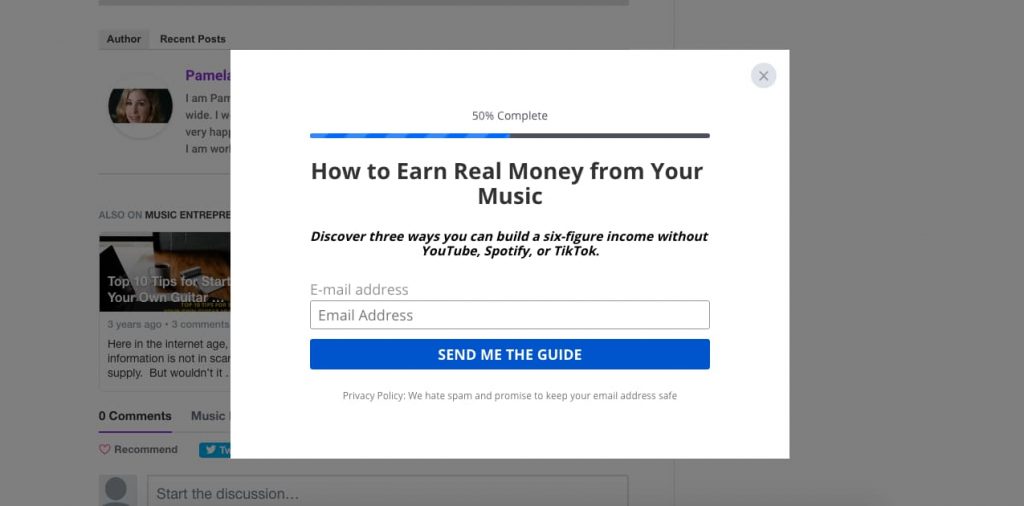
It’s important to learn what type of lead magnets work best for the type of audience you have visiting your website. For example, offering a template or an instructional guide will work when visitors are landing on your site for informational content. This is common in the B2B industry.
If you have a retail website that is mostly B2C sales, then offering discounts or coupons may be a more effective barter arrangement for the visitors landing on your site.
It’s impossible to know what will work best for your audience without trying different methods. The popover exit box seems to be one of the most effective methods for most websites.
Google warns about using popovers without an exit as they undermine the user experience. Make sure users can easily opt out of the offer being extended to them via popover.
Publish audience-centric content
If you consider what brings people back to websites, it always comes down to having really good content. Even if it’s the products or services that are in demand, there’s always good content that’s published to represent those offerings. Publish audience-centric content for the highest return rates and conversions and generate more leads from your website.
Create your content from a topical perspective to address the most important needs of your audience. The triggers that have the most impact are the pain points that create the need for a solution.
Break down your major keyword topics into smaller, focused articles that address the problems your clients are experiencing and offer a solution to the problem. If you can show someone how to overcome an issue that would make their life better, it builds trust and confidence in your brand.
Storytelling is another way to create content that your audience can relate to and enjoy. Use success stories of current clients where your company’s solutions have been able to make a difference. When people can relate and see how your company is able to help, it’s much easier to support your brand.
Publish long-form evergreen content assets
Publish in-depth, long-form content on evergreen topics. An evergreen topic is one that stays relevant far into the foreseeable future. By publishing a long-form content asset, you create the opportunity to rank for multiple keywords and drive more traffic which ultimately converts to more leads.

Evergreen topics can consist of a number of different content types such as interviews, question and answers, expert roundups, ultimate guides, case studies, infographics and original research.
When you publish a long-form article on an evergreen topic, it becomes a content asset because it acquires more backlinks and drives more traffic over time than a regular blog post. Evergreen content is topics that stay relevant so if you provide a high-quality resource, people will return to it, share it with others and continue to drive traffic and generate leads on a higher level than your typical blog post.
Include Call-To-Actions on every page
People need to be told what to do. Even though it may seem obvious to you, it’s not always obvious to a user on your website what they should do after reading a page. Include a call to action on every page of your site in order to gently urge users closer to making a conversion.
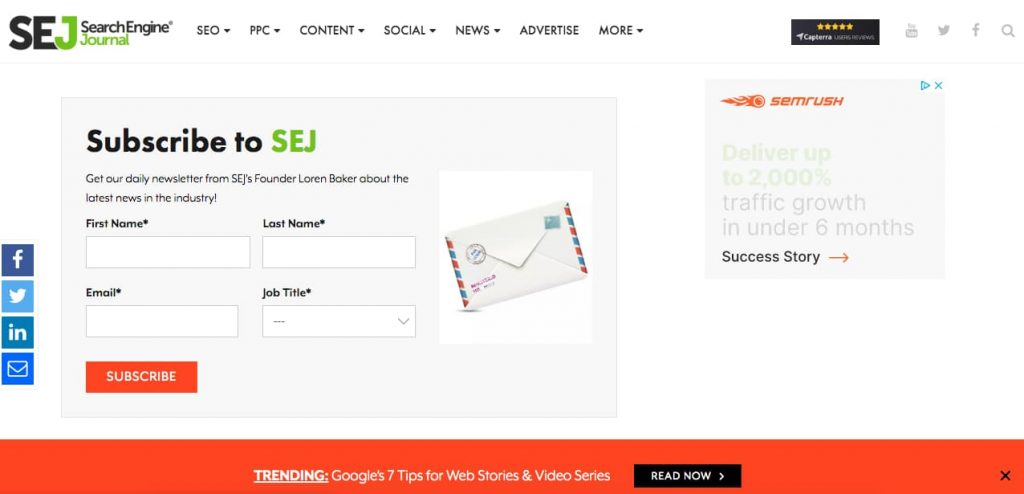
It’s a simple addition you can make to every page on your site, but it can make a huge difference in moving visitors further along your marketing funnel.
Whether it’s asking for them to share a page on their social network, filling out a form or making a phone call, ask your visitors to do what you want them to do.
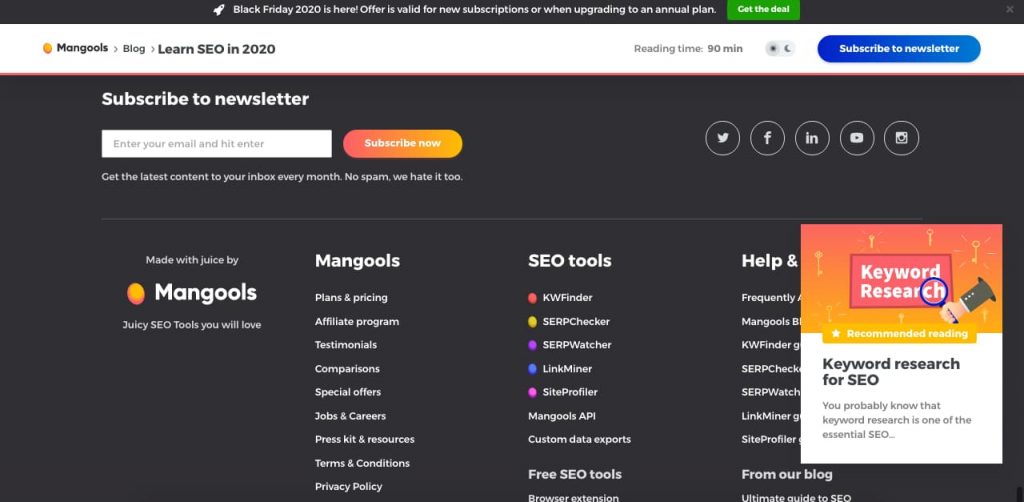
Include a method of contact on every page of your website
Another simple tip to generate more leads to your website and yet many websites fail in this department. Include a contact form or a phone number on every page to get in touch with your company. You don’t want there to be any reason a visitor is not able to contact you, and what’s more, is that you want to gently urge them to do so by having a method of contact available on every page of your website.
Establish your key performance indicators
It’s difficult to have an accurate idea of how your website performs without tracking your performance with a tool. At the very least you need to install Google Analytics to generate reports on how your website is responding to campaigns and changes you’re making to improve your lead generation.
Increase in dwell time
Track the pages that are most popular on your site. It’s important to know how much time users are spending on each page and whether that time extends after you’ve made adjustments.
Reduce bounce rates
Track the bounce rate of your pages. If people are backing out quickly, you should try adding different content or more internal links to guide them to more related content.
Track conversions
Create goals to track the number of conversions you make on each page. Your goals can consist of clicking a call button, landing on a contact page, filling out a contact form or making a purchase on your website.
Track every increase or decrease in conversions as direct indications of how well you’re adapting to the demand of your audience. When something works well, you can scale up your effort in that department.
When something doesn’t work, you can eliminate those tactics from your lead generation strategy.
It’s difficult to move forward without knowing exactly where you stand. There are dozens of tools to help guide your website to improved performance. Make sure you’ve established which KPIs will give you the most clarity for making decisions to improve your leads.
Drive more targeted leads to your business
Learn how to generate more leads from your website by implementing and testing as many tactics that are appropriate for your audience. There is no one way that is guaranteed to lead you to the ultimate conversion rate. However, you can identify what tactics leads to the ultimate conversion rates through split testing, tracking and adapting to what your audience needs and wants.
When something works, scale up your efforts. When it doesn’t work, make sure you know why and then eliminate the tactic as part of your strategy.
Be sure to stay consistent with your efforts and track your results. Click here to read how to drive more traffic to your site using 33 different tactics.
If you don’t have time to put these practices into effect, get in touch with us and we’ll create a lead-generating strategy that makes sense for your business.
10 Digital Marketing Strategies To Implement In 2023
Of all the important tasks that a small business has on its plate, there are at least 10 digital marketing strategies that should remain at the foremost of your mind. Here is a checklist for starting the New Year with an additional boost to your website’s search visibility.
- Optimize for keyword topics
- Create content for users
- Focus on one social media profile
- Build a personal influencer network
- Be an active guest author
- Improve UX
- Build an email list
- Incorporate branding
- Improve technical SEO
- Analyze and adapt
Optimize for keyword topics
The capability of search engines to extract meaning has changed the way content is optimized. Sprinkling keywords throughout your page isn’t enough to make a page relevant in a keyword-related query. It’s still necessary to have keywords in the most important places for on-page optimization but in order to truly be competitive, your content needs to be optimized for an entire keyword topic.
Keyword research
Keyword research is the process of discovering the most important terms as well as relevant topics that contribute to your page’s overall optimization. Use multiple sources for identifying keywords to create more options to choose from.
It would be impossible to publish a relevant page on kitchen renovations without mentioning the subtopics that go into performing a kitchen renovation.
By breaking down each topic into smaller subtopics, you’re able to target more specific search terms and provide more depth in a keyword topic.
Topic clusters
Creating topic clusters is an effective way to promote the relevance of your site for a specific topic. By identifying the most relevant subtopics of the most important terms to your business you can create a content cluster best represented by the pillar page model.

Pillar page model
The search term in this example is kitchen renovations. This topic can be broken down into subtopics to include countertops, flooring, lighting, cupboards, etc. The main page would link out to individual pages to explain each of these components in further detail.

As you dive deeper into detail it becomes apparent that each of the subtopics to kitchen renovations also has their own subtopics that can be further explained with separate pages. The phrase kitchen countertops can be broken down into more articles that explain the types of countertops and represent very high volume search terms.

Whether your content already exists or not, clustering your topics to show that your site goes deeper into detail will demonstrate expertise in your niche. By linking to the main pillar page from your subtopic pages, you raise the profile of the major search term. From a search engine perspective, this demonstrates the depth your site has for the entire keyword topic, enhances optimization and increases your site’s ability to answer user intent.
Create content for users
Satisfying search intent is a major factor in establishing relevance and ranking for a search query. The first page of results is a search engine product because it represents their best solution to a search query. Websites are selected in a search result based on the ability to provide what the user was looking for and as a result, be the final destination of the user’s search.
Search engines want to see that your site dives into the most important details of a query and has the ability to answer commonly asked questions related to the search.
Publishing content that provides solutions to common problems increases the value your site has because your content provides a specific response to a specific query. Create a resource for your clients and future clients by providing content that targets problems. Learn how to write SEO optimized blog posts to increase traffic your site receives.
Use the SERP as a resource to find what people are searching for the most. Google autosuggest, PAA boxes and featured snippets are major clues to the questions and answers people are searching for and serve as an indication as to what content should be included on your site.
Focus on one social media profile
There’s no question that a social network can provide an excellent source of the traffic to your site. Here is a list of the top social media sites and the number of users on each platform.
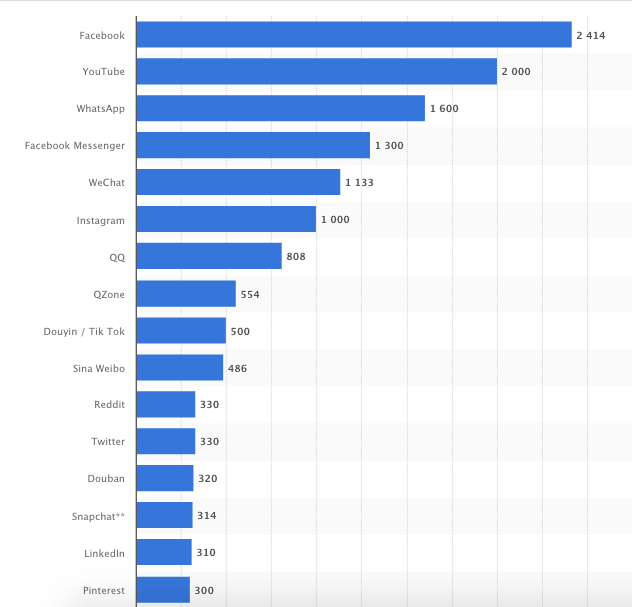
The top social media sites have become secondary search engines that can benefit your site by driving traffic from optimized content. In order to be effective in driving the most traffic from any social site, it’s necessary to be active as a community member and not just a robotic content posting machine.
The whole purpose of social media is to be social, which allows businesses to show a more human side in which people can relate. This type of effort takes time and resources so it’s advantageous to allocate enough attention to one profile where you actually engage with other members.
Choose the most appropriate social profile to focus on to create a strong presence and build a network. It wouldn’t make sense to focus on Instagram if your company specializes in high-ticket B2B services. LinkedIn would be a better platform for your particular niche.
However, if your selling retail products, Instagram is the perfect platform where your product can get a lot of exposure and interest.
Build a Personal Influencer Network
One of the top three ranking factors is the strength of your backlink profile. It has become increasingly difficult to acquire high-quality backlinks and building a PIN (Personal Influencer Network) can increase the speed at which your website acquires links.
Identify the influencers, site owners and authors that actively publish content in the same industry as your own. One approach in building a mutually beneficial relationship is to offer them value before you’ve even made contact.
For example, research their website and find what keywords they’re appearing for on the second page of Google.
Link to their site on relevant pages a number of times in your own content and link building efforts.
Reach out to them explaining how they’ve influenced your work and provide them with the list of URLs in which you’ve included links to their content. This in itself is often enough to encourage them to want to return the favour.
Regardless of how they respond to your generosity, they will definitely be more inclined to pay attention to a page you’ve created in which you need links.
A simple email informing them about your content is more than often enough for them to help you out by linking to your site.
Be an active guest author
Guest posting regularly is an excellent way to build awareness of your brand and acquire high-quality links. The characteristics of quality backlinks are that the links come from relevant content, on a relevant site and from a website that has a good flow of traffic and high search visibility for similar keywords (preferably with a high DA).
You control all of these factors and apart from the authority, you build from the links you increase the awareness of your company and create relevant streams of traffic to your site.
Improve UX
The experience users have on your site plays an important role in engagement. Visitors will leave a site that they find difficult to navigate or that takes too long to load.

Page speed became an official ranking factor on mobile devices in July 2019 after the Mobile-First update. Considering that the majority of searches are now performed from a mobile device this places a high priority on maintaining fast load time.

Speed up your pages load time by uploading images that are compressed and sized to fit the space for what your site needs.
Use plugins to minimize and inline your HTML, CSS and JavaScript.
Delete unused plugins to clear unwanted clutter from your header as this is the first area to register when your site is loading.
Build an email list
Boasting the largest ROI in the business at roughly 3800%, email marketing is an aspect you can’t afford to ignore. An email list will Google-proof your website by providing traffic through scheduled newsletters, updates or promotions.
Build an email marketing campaign and learn more about your audience through the statistics your campaign generates that provide insight on user behaviour. High open rates indicate what subject lines would make great headlines to attract attention. High click-through rates to your site indicate interest in a particular topic in which you can build more content on your website.
Incorporate branding
As the competition becomes more difficult, branding becomes a bigger asset to your marketing. Incorporate branding in your link building and content creation. When users recognize your business it encourages leapfrog clicks. People will jump to your site if they recognize your company as opposed to clicking on a site they don’t recognize.
The way people scan search results is shifting from the traditional allocation that ranking suggests. The number one position won’t always get 30% of the traffic because people will click further down the page for a recognizable brand. This type of user behaviour improves your site click-through rate, which also results in a higher ranking on the SERP.
Improve technical SEO
Stay on top of the technical aspects of your site to maintain a competitive edge. When all things are equal in terms of content, optimization and backlinks, the technical performance of your site can mean the difference in outranking your competition.
Use tools such as Screaming Frog or Deep Crawl to get an overview of the performance of your site. Identifying and correcting indexing issues, duplicate content and metadata issues can improve the performance of your site. A few 404 errors (broken links) may not hurt your site too much, but as they accumulate they can weigh down the user experience and therefore affect your ranking ability.
Analyze and adapt
Optimize your websites for performance in every aspect that pertains to how search engines are ranking sites for your keyword. Analyze the SERP to identify the characteristics the ranking pages share and what is making a difference in how Google is determining to rank websites for that particular search term.
For example, a characteristic that magazine-style blog sites benefit from is fresh content. Having the most recently published content is baked into the ranking algorithm. Therefore, maintaining a consistent publishing schedule and updating older blog posts creates positive ranking signals and a sharper competitive edge.
Every niche and every keyword should be considered separately because Google’s ranking algorithm changes with the intent of a search. Be aware of what’s working on the SERP for your keywords to make those adjustments and additions necessary to rank in a top position.
Implement sound digital marketing strategies
Execute careful and consistent content strategies that address the needs of your current and future clients.
The top-ranking factors (content, backlinks and Rankbrain) are ultimately related to providing the best experience for the user. Keep this in mind when forming keyword, content, link-building and digital marketing strategies for the biggest impact in traffic and lead generation in 2023.
Related reading: 12 Web Design Trends By Toronto Experts
Increase Organic Click-Through Rate
SEO is the holy grail of inbound marketing. Placing your website where people are actively searching for what you offer is one of the most effective online marketing strategies with the highest conversion rate.
You may not be familiar with the term, but your organic click-through rate is an important metric when it comes to gauging the performance of your pages in the search engine result page (SERP).
What is the organic click-through rate?
The organic click-through rate refers to how many clicks your website receives compared to the total amount of available clicks. If a keyword generates 1000 clicks on the first page of search results and your website gets 400 of those clicks, your organic click-through rate is 40%.
The trend has been an increase in the number of Google features that occupy the first page of search results. This has forced website owners to take a more strategic approach to generate traffic from the Google search index.
The organic click-through rate your website receives becomes an important factor because it’s a metric that Google measures and rewards. Each position on the first page of search results has an expected click-through rate. If your website exceeds the expected click-through rate, Google will position your page higher in the SERP.
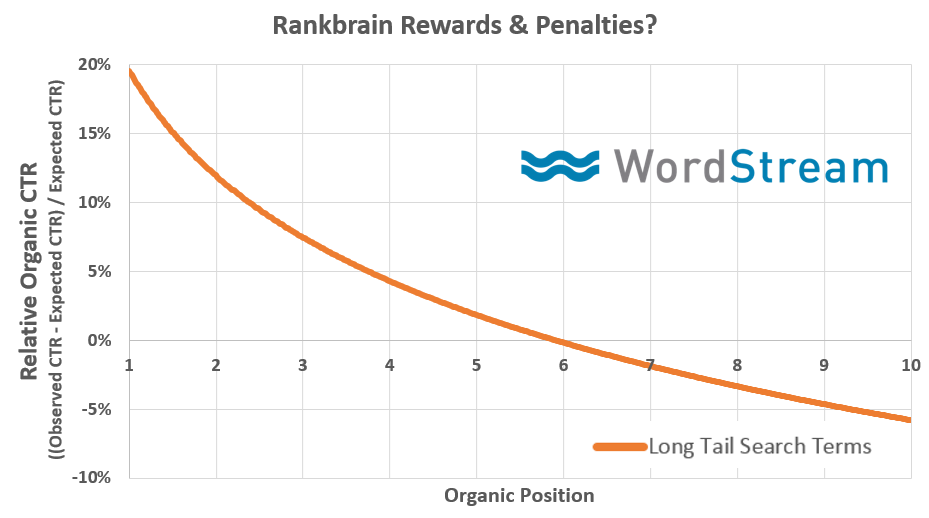
The same holds true if you reverse the situation. If your page receives less than the expected number of clicks, it will lose position on the SERP.
The click-through rate your page receives plays an important role in your ranking and ultimately in the volume of traffic, you drive to your page.
So how can you increase the organic click-through rate of your site? Here are a few strategies to implement that will work to get your page more clicks from the SERP.
Improve your page ranking
If you improve the position of your website on the first page of results, you will naturally increase the organic click-through rate. The first five search results typically receive the lion’s share of the traffic on most keywords. Improving your position closer to the top of the page will give your website more search visibility and as a result, more clicks to your page.
Improving your ranking isn’t a simple task but with a planned effort you can work towards this goal using the following tactics:
Enhance optimization
Make sure you’ve covered the essential on-page optimization factors that indicate the most important keywords on your page. Use your keyword in the title, meta, URL and within the first 100 words of your page.
Tag your images with your keywords within the image alt description and as a bonus, use the keyword in the image filenames.
You can use the tool Text Optimizer to make improvements to the text on your page. This tool will suggest a number of LSI keywords to add to your page and could be the boost you need to enhance your optimization.
Add backlinks
A high-quality backlink will increase the ranking ability of your page. Avoid linking to questionable websites and make your links count by researching and vetting the websites to make sure they are a good source of authority and credibility for your content.
Answer search intent more thoroughly
At the end of the day the most important part of achieving a top ranking is about how well your page answers the intent of the search. Make sure a user can land on your page and have every question answered that’s related to the query.
Analyze the top-ranking pages and make sure you haven’t left any details out in your content. Improve the quality of your page to be a better solution to user intent.
Tempt users with a catchy headline
The headline of your page is the most important part of marketing your website in the SERP. It’s one of the first things a user sees when scanning the results page and will heavily influence whether they will click on your site. There are dozens of headline strategies you can implement that are proven to attract more clicks.
Did you know traffic can be swayed as much as 500% based on your headline? Your headline is the single most important selling feature of the content you’re producing.
There are numerous studies that have been published to improve the click-through rate of your site by making subtle changes to your headline. Learn how to write a great headline using any one of these strategies.
Use numbers in your headline
One of the top-performing types of headlines is those that include numbers. Listicles, by far, receive the highest CTR and get the most shares on social media.

Incorporate a number within your title to improve the number of clicks your page receives.
Use brackets within your headline
Another strategy to increase organic ctr is to use brackets in your headline. The use of brackets attracts users because they understand they’re getting a quick summary of the article. You can use brackets to feature specific aspects of your content and make it more enticing for the click.
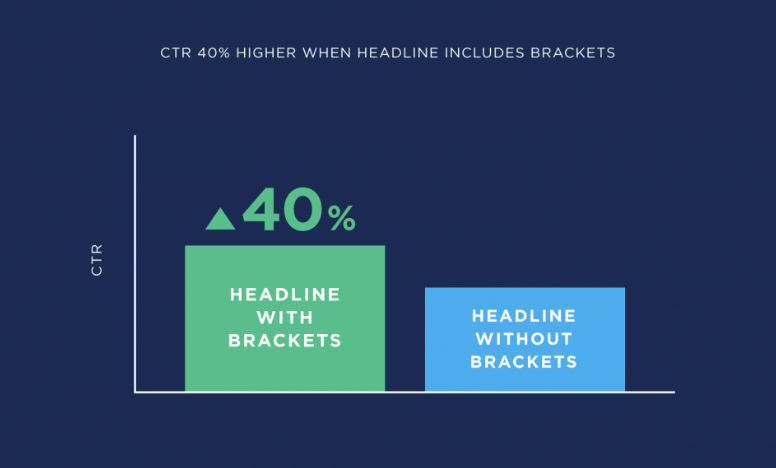
Create user/search engine-friendly URLs
Use short, descriptive URLs that contain your keyword so that search engines and users have an accurate idea of the content your page contains. The URL is one of three things a user will see on the result page so it’s important to take advantage of this aspect of marketing your content.

Compare the above URL with non-descriptive URL (below) and it’s much clearer why a user would pick the shorter URL that includes the target keyword.

User-friendly URLs are easy to read, short and are typically a summary of the content and a shorter version of the title. Avoid computer-generated URLs that have no meaning to users or search engines. Take a look at the ranking results of pages that have short URLs:
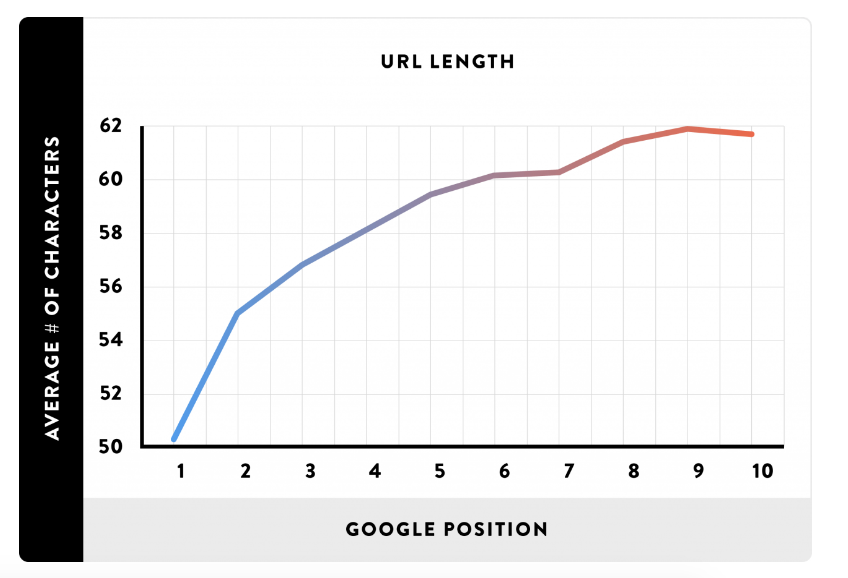
If you’re using WordPress (which accounts for 75% of the total websites created) then it’s an easy fix to make sure you’re able to use your keyword in the URL. Simply go to Settings, Permalinks, and select Post name as the preferred extension of your URLs.
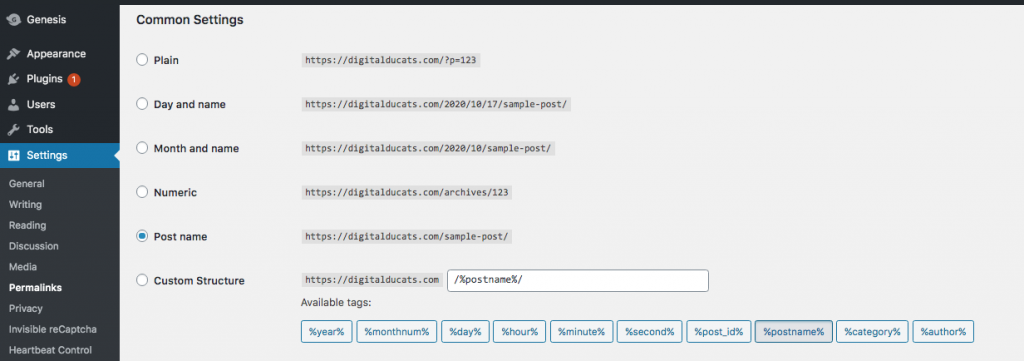
Draft enticing meta descriptions
The meta description is your opportunity to convince a user that your page is the best option to satisfy search intent. Incorporate the keyword in the front end of your meta description to show users that they’ve come across a page directly related to their search.
You have 160 characters to create an elevator pitch to get the user excited about the content that you’ve published. Provide an accurate summary of how your page addresses the true intent of the search.
Install Yoast for the easiest way to manage your metadata. Yoast provides you with a section to enter your meta description with a visual gauge for making sure the length of your description is adequate.

Failure to enter a meta description will force Google and other search engines to come up with one for your page. The snippet that appears may not be as convincing as the one you can create yourself. It’s an SEO best practice to include a meta description for every page you intend to display in the search results.
Implement structured data markup
Structured data markup is useful for search engines because it summarizes the content on your page in a more easily accessible language. The implementation of structured data markup can result in rich results, which enhances the quality of your search result listing.
Rich results
Google has steadily increased the number of features that appear in a search result. Anything that isn’t just a blue link can be considered a rich result.
Rich snippets can make your listing more attractive to users and therefore attract more clicks. Rich results can come in a variety of flavours, however, there are specific types of Schema you can deploy that will encourage Google to feature your content as a rich result.
There are ratings and reviews,

FAQ Schema,
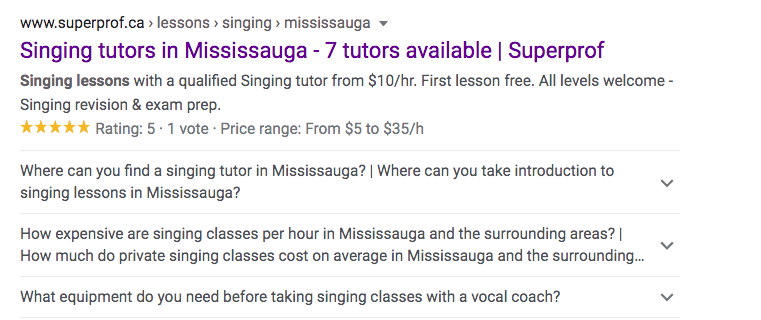
Q & A Schema,
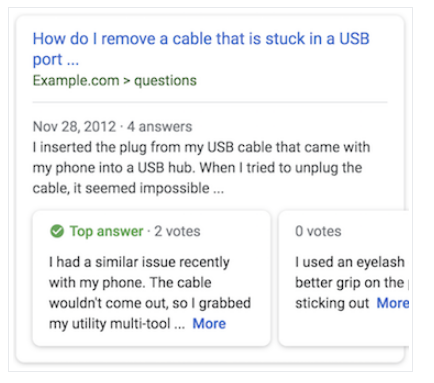
How-to Schema,

By implementing the correct structured data markup, you can deploy the types of Schema that will make your page eligible to be featured as a rich result to increase the organic CTR of your website.
Increase page speed
The speed at which your page loads plays a role in how many visitors actually land on your page. If you’re anything like the majority of users, you can relate to the fact that people tend to leave websites whose pages take a long time to load. In fact, studies show that an increase in load time from 1-3 seconds will increase the likelihood of visitors backing off your page by 32%.

Increase your page speed to reduce the bounce rate and get more visitors on your page. You can do this a number of ways but the first step is to identify the problem by visiting Google PageSpeed Insights.
Enter your URL and Google will provide you with a detailed report on how to improve the time it takes for your pages to load. The report will indicate the major areas that are slowing down your page.
Take preventative measures
Make page speed a conscious effort in your content creation to improve user experience. Use plugins that reduce the size of your images (Smush) as well as a CDN for faster server response times. W3 Cache is also a plugin that will allow you to leverage browser caching and inline HTML, CSS and JavaScript. By addressing these four issues you can maintain a page speed close to the recommended load time of 2 seconds.
Target additional keywords
Optimize for additional keywords to increase the organic click-through rate of your page. Although you may be targeting one major keyword, you can improve the traffic your page generates by identifying alternate keywords that your page is also ranking.
Rather than just driving traffic from one keyword, you can improve the optimization of a second and third keyword to increase your position and overall click-through rate.
Using a tool such as SEMRush makes it easy to see what alternative keywords your page is appearing for in a search.

Moving your page up from the second page to the first page can tremendously affect the clicks your page receives, but keep in mind that some of the greatest gains with less effort will come from moving your page from positions 6-10 into the top 5 search results.
Increasing organic CTR ultimately increases revenue
The traffic your website receives is directly related to the revenue it generates. The law of averages dictates that the more visitors that are frequenting your website means that there will be more sales and new clients.
If you’ve targeted the right keywords in your strategy you now have multiple ways to increase organic click-through rate which results in increased traffic, leads, and new clients.



